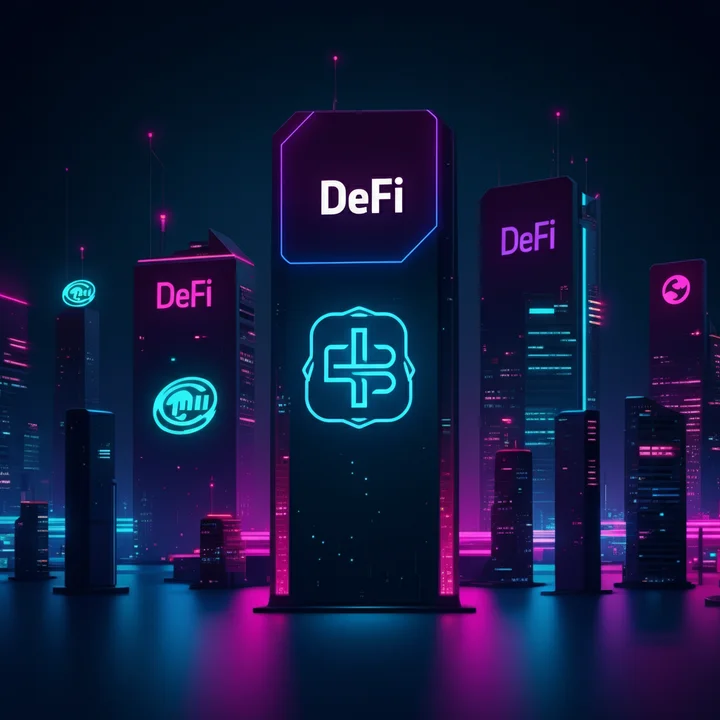Banking as we know it is changing. From long queues in traditional banks to fast and seamless financial transactions powered by blockchain, the financial industry is undergoing a profound transformation. At the forefront of this revolution is decentralized finance (DeFi), a system that operates without the need for traditional banks or intermediaries.
But does DeFi truly have the potential to replace traditional banking, or will the two systems coexist in the future? This blog explores what DeFi is, the challenges and benefits it offers, and what its rise means for consumers and institutions alike.
Overview of Traditional Banking Systems
For centuries, traditional banking systems have been the backbone of the global economy. Banks serve as intermediaries, providing services like loans, savings accounts, foreign exchanges, and payments. They centralize financial management, offering regulated and secure environments for consumers and businesses to manage their money.
However, traditional banking is not without its flaws. Issues like limited global access, high fees for international transactions, slow processing times, and bureaucratic processes have left millions without adequate financial services. According to the World Bank, nearly 1.4 billion adults remain unbanked, often due to geographical and economic barriers.
Enter DeFi, a disruptive force that challenges these longstanding norms.
Core DeFi Features Challenging the Banking System
Unlike conventional banks, DeFi operates on blockchain technology, enabling financial products and transactions without intermediaries. Here are some core features changing the game:
1. Smart Contracts for Loans
DeFi platforms enable lending and borrowing through smart contracts, programmable digital agreements that automatically enforce transaction terms. Platforms like Aave and Compound allow individuals to borrow funds directly from liquidity pools while paying interest, bypassing banks altogether. Additionally, collaterals and interest rates are determined transparently.
Example scenario: Someone needing a quick loan can use Ethereum tokens as collateral to borrow stablecoins instantly on a DeFi platform without going through lengthy credit checks, a stark contrast to bank loans.
2. Interest Yield Through Staking and Liquidity Provision
DeFi offers individuals the opportunity to earn interest by staking their cryptocurrency assets or providing liquidity to decentralized exchanges (DEXs) like Uniswap. This process often yields higher returns than what traditional savings accounts offer.
For instance, a person staking stablecoins may earn an annual percentage yield (APY) of 6%-10%, far surpassing the near-zero interest rates offered by many banks today.
3. Peer-to-Peer Transactions
DeFi enables seamless peer-to-peer (P2P) transactions between individuals anywhere in the world, with minimal fees and no delays. Services like Bitcoin and Ethereum allow users to bypass traditional payment processors completely, making DeFi ideal for remittances and global transfers.
Benefits of DeFi
DeFi may sound futuristic and complex, but its growing popularity highlights its advantages over traditional systems.
1. Global Accessibility
DeFi is accessible from anywhere with an internet connection, meaning anyone with a smartphone can participate in the global financial economy. This is life-changing for people in underbanked regions, offering them financial tools and services once out of reach.
2. Eliminating Intermediaries
By cutting out banks and middlemen, DeFi dramatically lowers fees for things like currency exchanges and payments. Additionally, decentralized systems reduce delays caused by manual approvals, enabling faster transactions.
3. Transparency and Control
DeFi provides users with unparalleled transparency as all transactions occur on public blockchains. Users retain complete control of their funds without having to rely on institutions to safeguard their assets.
Challenges in DeFi
While the benefits are enticing, DeFi is still in its early stages and faces substantial challenges that hinder its mass adoption.
1. Regulatory Uncertainty
Governments are still determining how to regulate DeFi. Unlike traditional banks, DeFi operates in a legally gray area, which raises concerns about investor protection, taxation, and compliance. Overregulation could undermine the appeal of decentralization, while underregulation could lead to exploitation.
2. Issues of Scalability
Popular blockchain networks like Ethereum often struggle to handle network congestion during peak usage, leading to exorbitant transaction fees (gas fees) and slow processing times. Scaling solutions are underway, but it remains a roadblock to global adoption.
3. Security Risks and Exploits
Despite being built on blockchain's secure infrastructure, DeFi applications are not immune to vulnerabilities. According to CipherTrace, DeFi hacks cost over $1.9 billion in 2021 alone. Bugs in smart contracts or malicious actors can potentially cause significant losses.
Institutional Adoption and Partnerships
Interestingly, despite its disruptive nature, DeFi is starting to integrate with traditional finance (TradFi). Many institutions are exploring partnerships and hybrid models that combine the strengths of banking with blockchain technology.
Visa and MasterCard are exploring blockchain payment solutions.
Financial institutions like JP Morgan are experimenting with tokenized assets and blockchain for cross-border transfers.
FinTech firms like Square and PayPal are integrating blockchain into their user interfaces to offer cryptocurrency payments and investment options.
Institutional adoption signals DeFi’s movement toward legitimacy and mass use.
What It Means for Consumers
For consumers, the implications of DeFi are profound. It empowers individuals by giving them more control over their financial assets and options, potentially meaning better returns on investment and more accessible financial tools.
However, due diligence is essential. Lack of traditional oversight means users must educate themselves on associated risks and ensure security practices like securing their private keys.
The Future Outlook for DeFi and Banking
Will banks disappear entirely and pave the way for DeFi dominance, or will there be a harmonious coexistence?
Most likely, a hybrid ecosystem will emerge. Traditional banks and governments are unlikely to relinquish control of global finance. But by adopting blockchain features, they may improve accessibility, transparency, and overall efficiency.
DeFi, meanwhile, will continue to grow and innovate, challenging banks to keep up and raising the bar for the global banking system.
For consumers and businesses alike, the key is leveraging the strengths of both systems while navigating their limitations.
Final Thoughts: The Evolution of Finance
While DeFi may not fully replace banking in the short term, it is undoubtedly a driving force behind a changing financial landscape. For individuals and organizations, staying informed about DeFi and blockchain is no longer optional—it’s essential to staying competitive and future-ready.
If you’re looking to deepen your understanding of how blockchain and DeFi could reshape your business, now is the time to explore this dynamic technology further.



